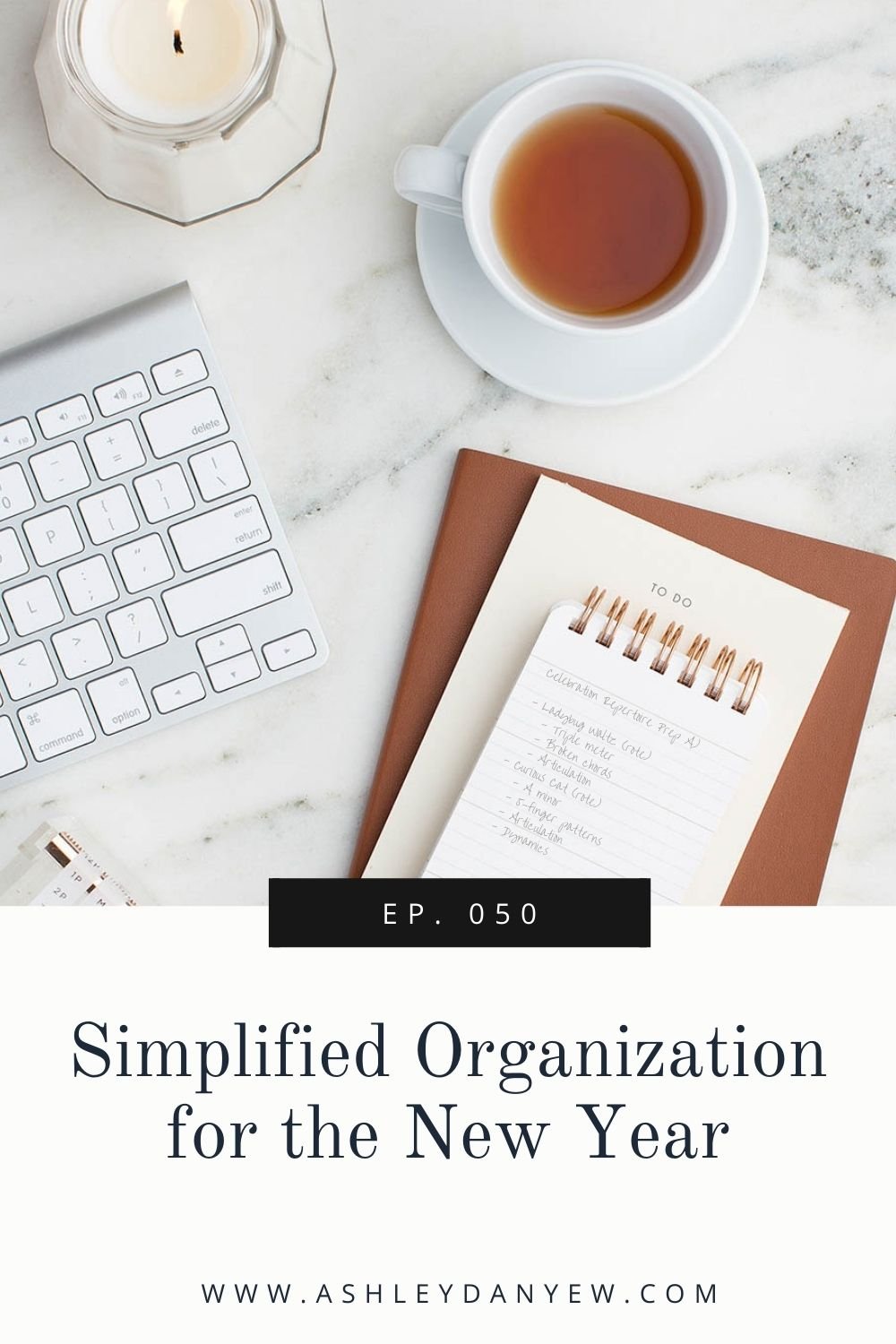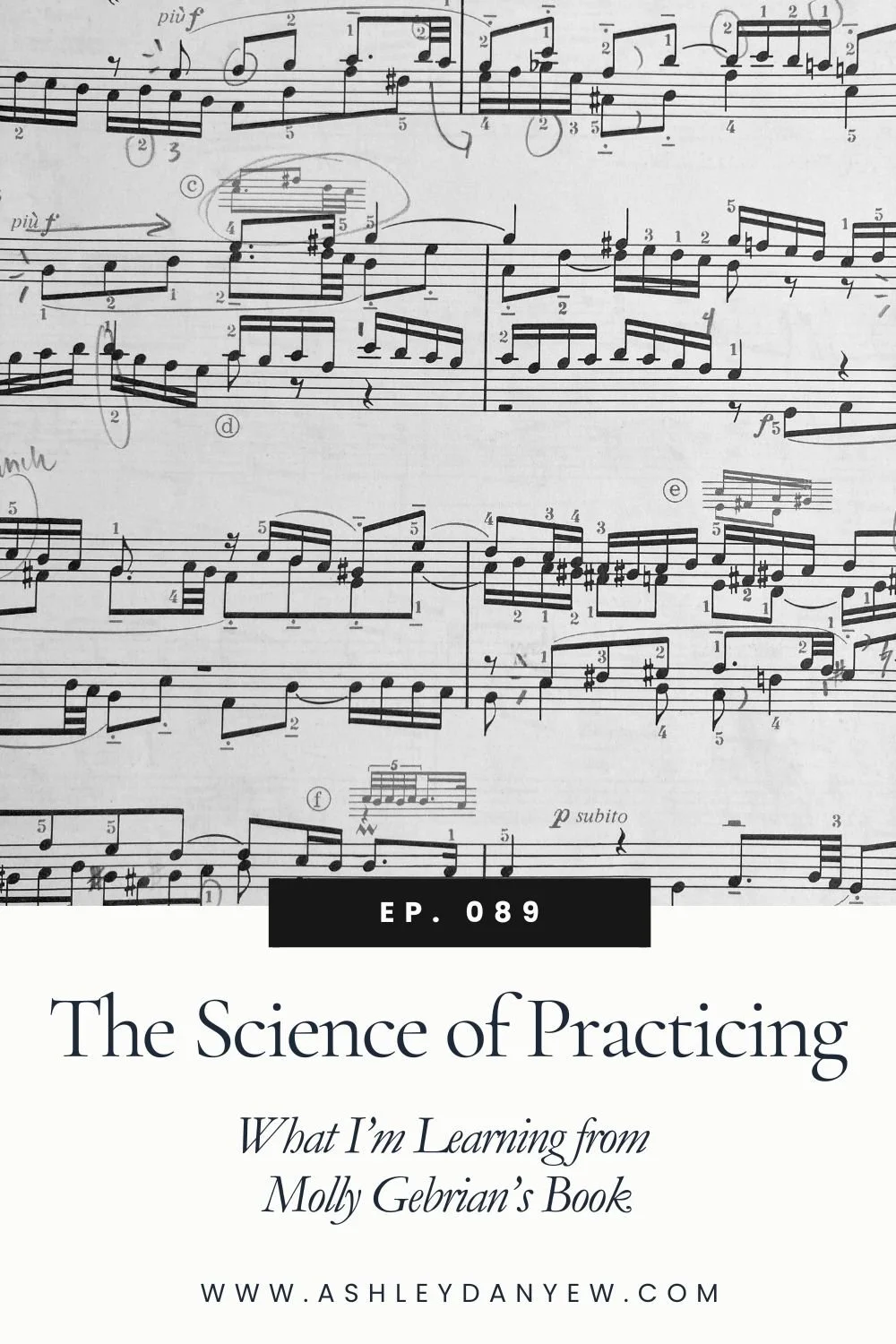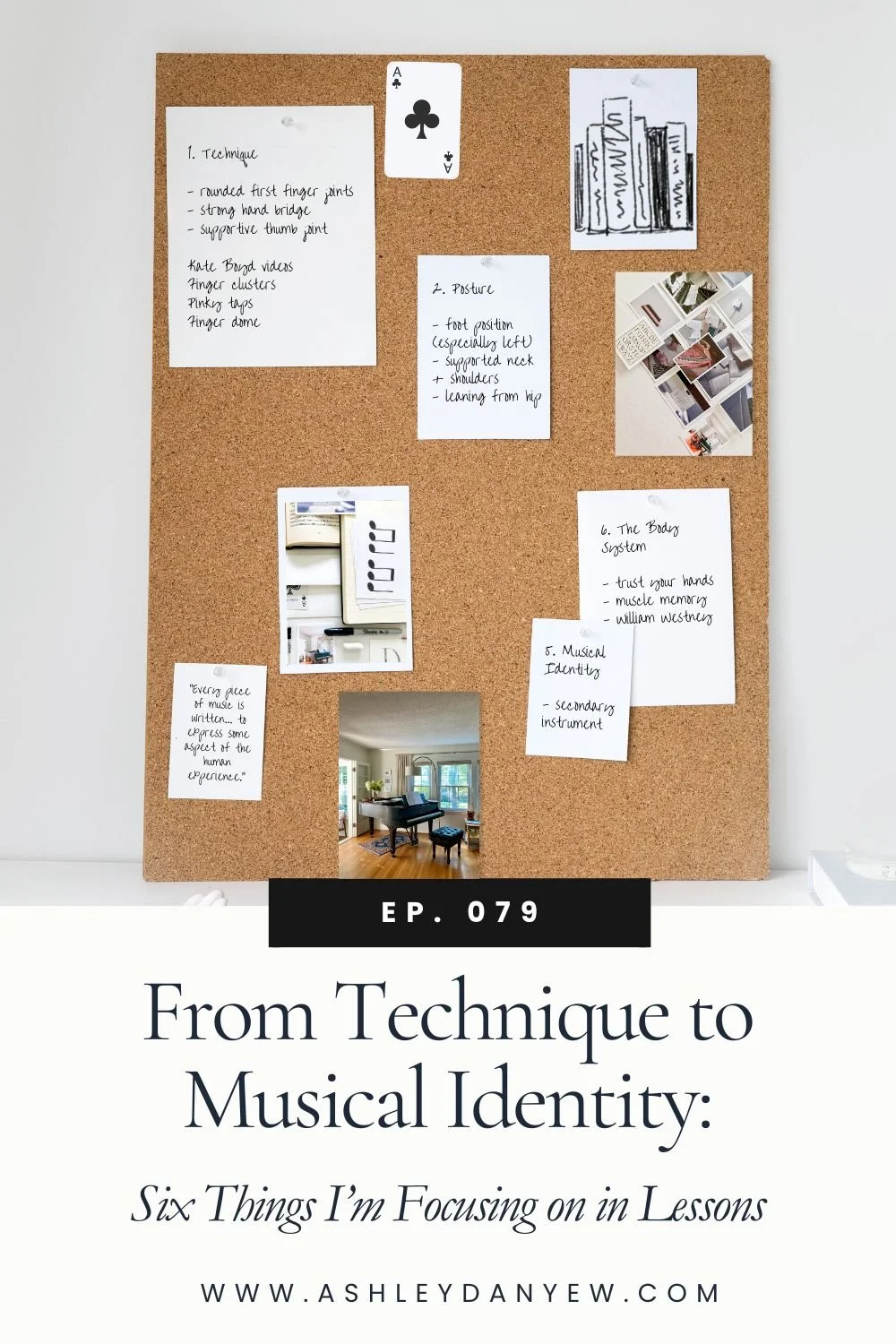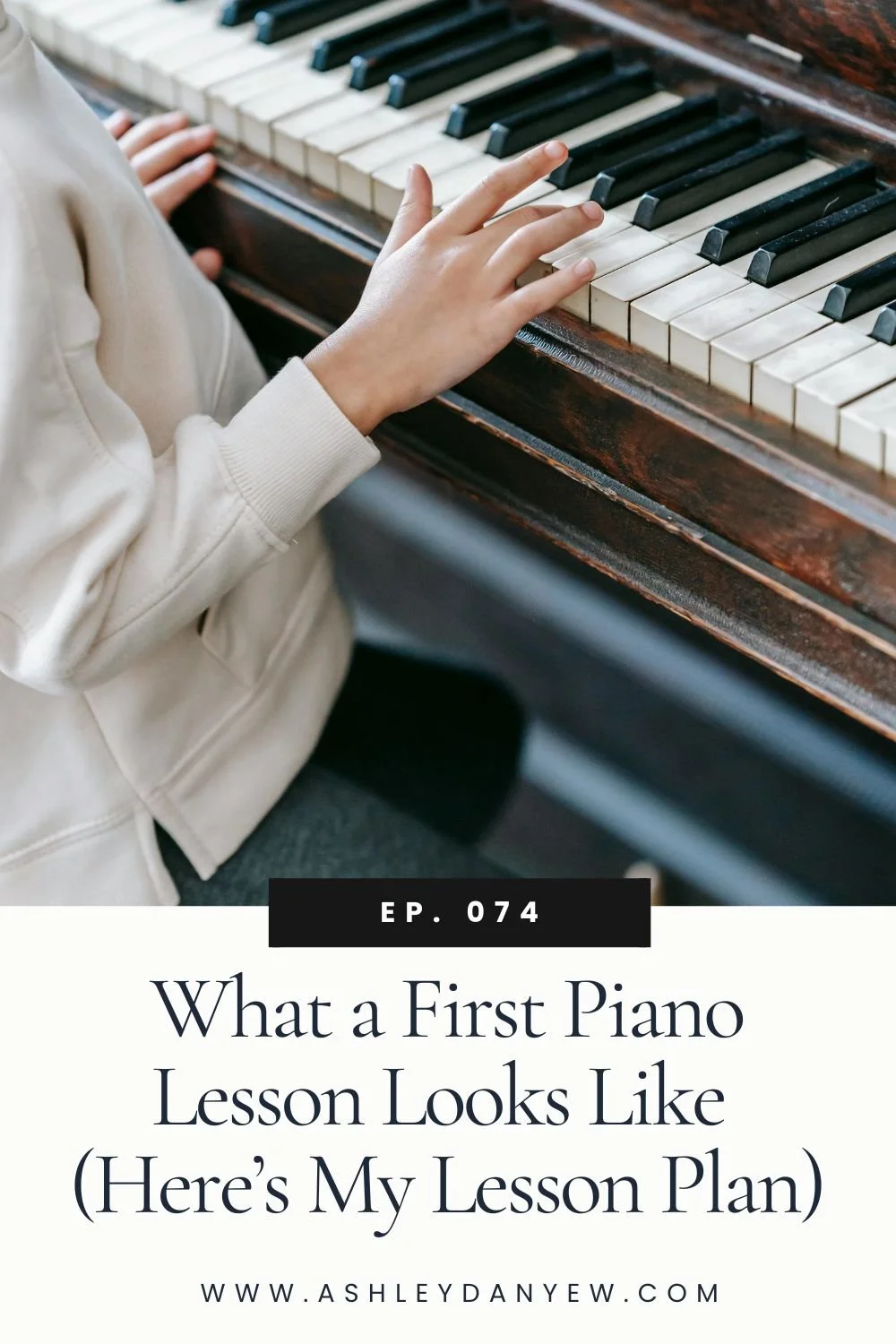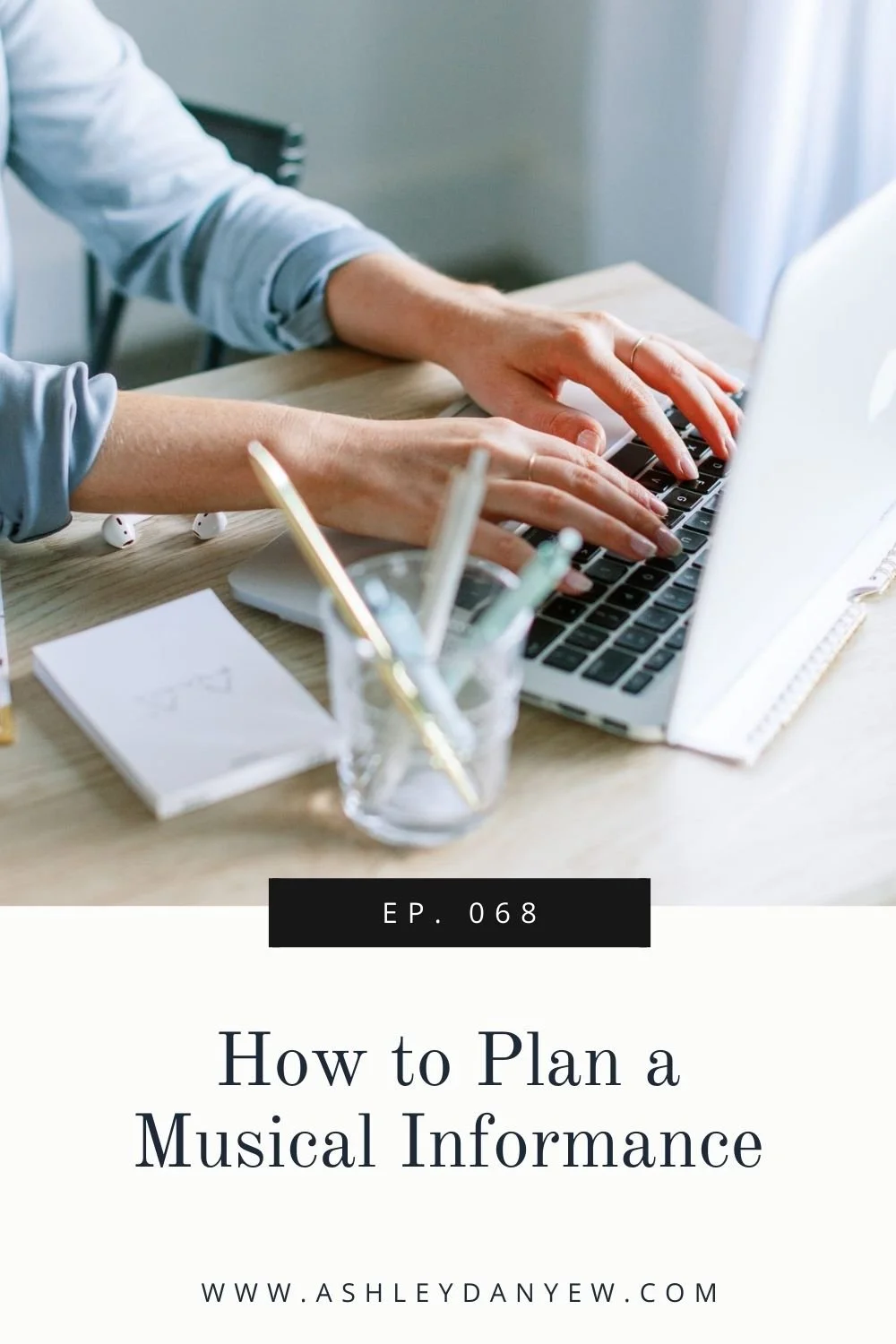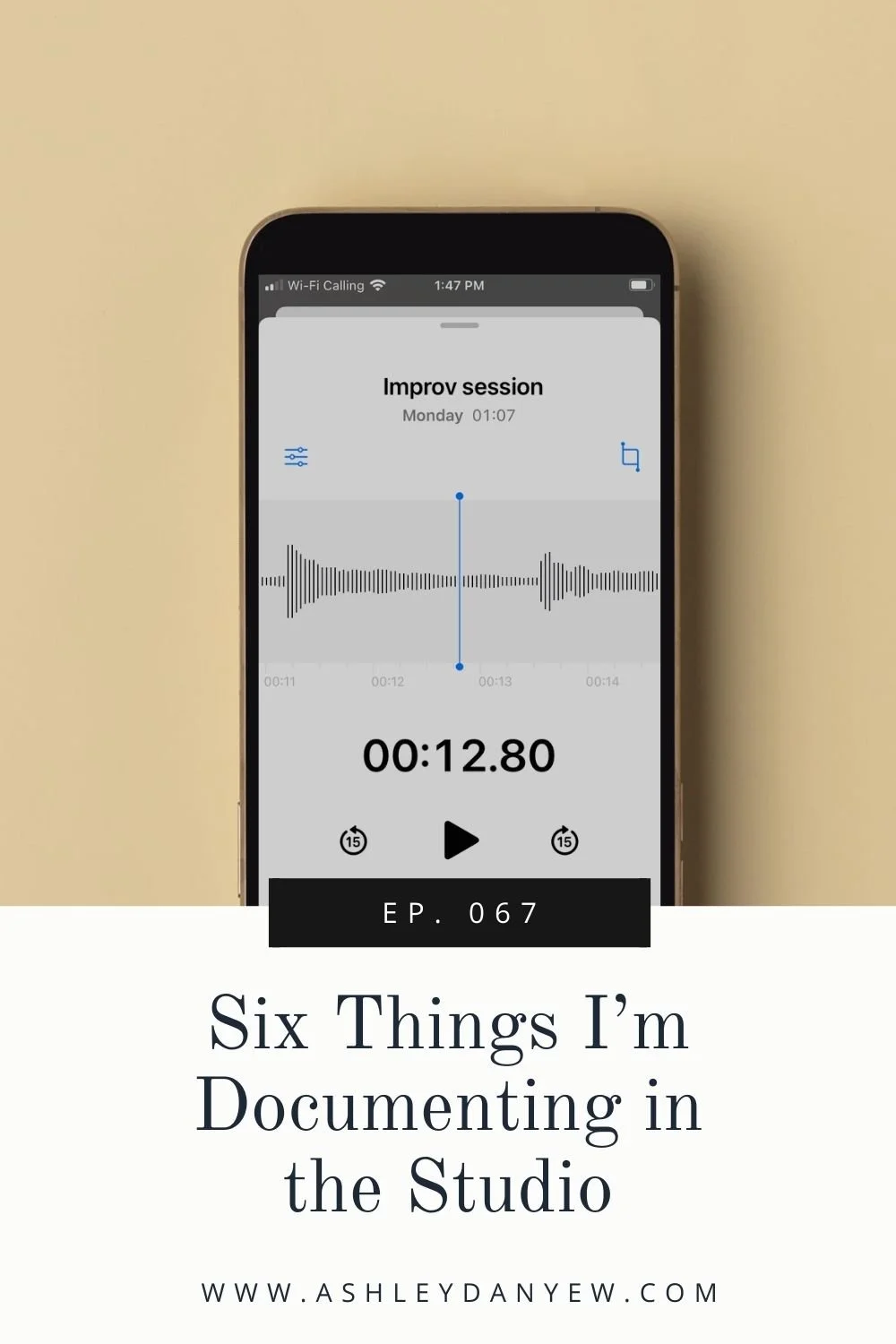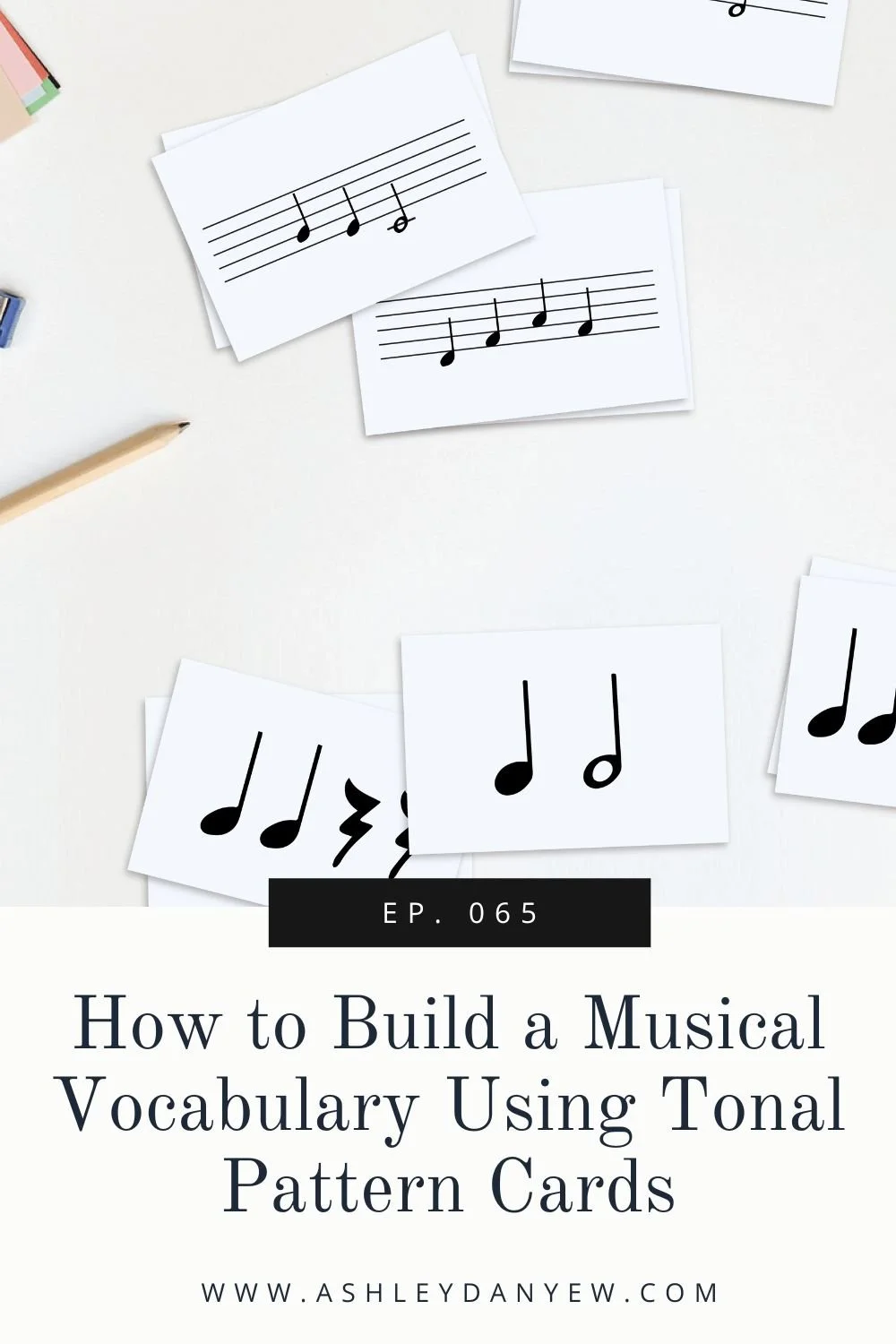Resources Mentioned
*Disclosure: I get commissions for purchases made through links in this post.
Keybop, Vol. 2 (Jason Sifford)
Preludes in Patterns (Kevin Olsen)
Milanote - the tool for organizing creative projects
Notability - note-taking app
It's back-to-school season, which means cups of hot tea in the mornings, new music to learn and explore, a new teaching schedule, and a few new organizational tools and strategies to test out, per usual.
The start of a new school year is a great opportunity to reset, refocus, and try new things. I talked about this back in Ep. 006 - Four Things I'm Doing Differently in My Studio. It's interesting to look back and see how much has changed and what I've learned in two-and-a-half years!
Of course, there are certain parts of my routine that I enjoy coming back to—things I look forward to picking up again—but there are always a few things I’m ready to change or alter in my teaching or my business. You, too?
Today, I'm sharing an inside look at three big studio projects I worked on this summer—repertoire planning, technique organization, and an aural skills video library—and how I'm implementing them into my studio this fall.
Three Things I’m Doing in My Studio This Year
*Disclosure: I get commissions for purchases made through links in this post.
1. Repertoire Planning
It was a summer full of repertoire planning for my studio.
It started with the release of the 6th edition of the Celebration Series by the Royal Conservatory of Music, a comprehensive 22-book set featuring repertoire from Preparatory A to Level 10. I spent a few weeks in June and July poring over the music in each level (repertoire and etudes) and making notes about which books I wanted to order for which students this year.
I also took the time to make a list of key features, technical gestures, and musical concepts for my favorite pieces in each book so I can reference that as I make repertoire plans for each student this year.
One thing I'm experimenting with this year is repertoire swaps: substituting an outside piece or something from another book for a piece (or several pieces) in a student's method book. This gives me the opportunity to introduce a more challenging piece while still teaching or reinforcing the same primary musical concepts (for instance, dotted quarter note rhythms, 3/8 or 6/8 time, or broken-octave accompaniments).
After working through the Celebration Series, I spent some time in August looking at the big picture of what repertoire each student will have this year and where there may be room for something else. I have several students who are around Level 3 in method books but also in middle school, which means they're looking for music that sounds cool. But from a teaching perspective, I'm looking for repertoire that will support their technical and musical development and provide some amount of challenge.
I discovered two new collections in my research that I'm excited to introduce to my students this fall: Keybop, Vol. 2 by Jason Sifford and Preludes in Patterns by Kevin Olsen. Both are for early intermediate students.
Keybop, Vol. 2
This collection features 11 contemporary solos inspired by jazz, rock, pop, and modern styles. They have appealing titles such as "Bobblehead," "Predicament," and "Scatter!" and the program notes from the composer provide additional insight and imagery. The pieces feature light syncopation, sequences, interesting keys (like B minor and G Mixolydian), and colorful harmonic progressions.
I also like the opportunities it provides for creativity. Sifford writes, "As with Volume 1, treat the printed music as a starting point and feel free to make any changes that help the music fit your unique personality and point of view."
Preludes in Patterns
This collection features 10 two-page solos in a modern style, each set in a different key: five major and five minor up to two sharps and two flats. Each prelude is based on a musical pattern, which provides a great discussion opportunity as we identify what the pattern is and how the composer used it throughout the piece.
I think this will also provide a wonderful opportunity for creative expression, as I plan to have students compose their own pieces based on a musical pattern using some of the same compositional devices Olsen uses.
2. Technique Charts
I've been looking for a new way to organize technique assignments for my students. For the past few years, I've used boards in Milanote, which I wrote about in a blog post last year. This worked, but it was a little cumbersome to access it during lessons (they have a new iPad app, which would make this easier), it was difficult to track when something was assigned vs. when it was mastered, and it required a lot of prep at the beginning of the school year copying and pasting technique assignments from each level to each student's board.
Again, it worked, but I've been looking for a better solution.
This summer, I spent some time creating technique charts. These are simple 1-2 page documents based on the RCM technique requirements in the Piano Syllabus. I took a screenshot of the technical requirements for each level, dropped them into a Pages doc, and created tables for tracking students' progress throughout the year (e.g. one for scales, one for chords, one for arpeggios).
Each table includes a row for assigned and a row for mastered, which I think will be helpful, plus columns for the keys assigned in that level. I create these based on the tables that are used in the Piano Safari Technique books.
The great thing is that I only need to create one technique chart for each level and then I can duplicate it for each student. Once I had the whole document completed, I uploaded it to my iPad and put the relevant pages in each student's folder in Notability.
I talked about this briefly in Ep. 047 - An Inside Look at My Lesson-Planning Process. Each of my students has a folder with their assignment sheet document, their technique chart for the year, and theory activities that correspond with their level (I duplicate these as needed from a general activities folder).
I feel so organized going into the year!
3. Aural Skills Video Library
The third facet of my studio planning (in addition to repertoire and technique) is aural skills. I talked about aural skills games and activities back in Ep. 026. I always do an aural skills assessment at the end of the school year (with intervals, playbacks, clapbacks, etc.), but I have been searching for a way to organize and sequence aural skill activities so I can incorporate them into lessons more often.
Last year, I used the RCM online ear training for a few months and it was great for online lessons—I used it almost every week!—but I found it a little more difficult to use when we moved back to in-person lessons. It meant I had to bring my laptop and have it set up where students could see but I could still navigate while social distancing—it was a whole thing. Also, I found the exercises would repeat sometimes within the first couple of minutes of using the app, even if a student had gotten it correct the first time, which wasn't the most efficient use of our time.
This year, I'm trying something new.
I was reminded this summer that a few savvy piano teachers have created several helpful ear-training videos on YouTube, organized by RCM level. These videos include chord ID, intervals, chord progressions, playbacks, and clapbacks and most are under two minutes. I made my own playlists for each level so I can mix and match videos from different creators and easily access these exercises in lessons from my iPad.
To track which students have completed which videos, I'll make a list of video content for each level to upload to each student's folder in Notability. Then, when we complete a video (or part of a video) in a lesson, I can check them off or make notes that are specific to that student.
Summary
So, there's your 10-minute summary of everything I worked on this summer and what I'm doing differently this school year. I hope it's helpful to hear about my organizational strategies and things I'm testing out in my studio.
I'd love to hear from you—what's something new you're trying in your teaching this year?


